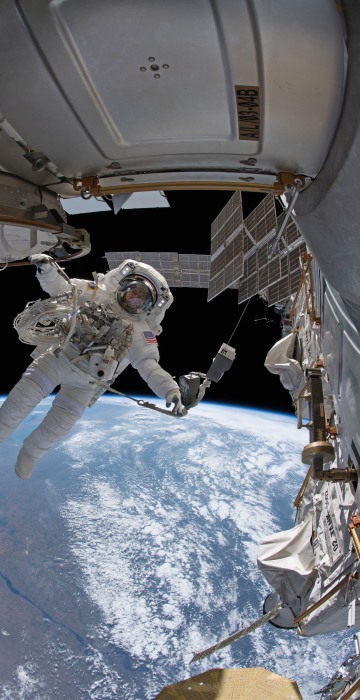
Space
Month in Space Pictures: June 2018
An asteroid gets its close-up, watching the World Cup in zero gravity and more out-of-this-world pictures from June 2018.
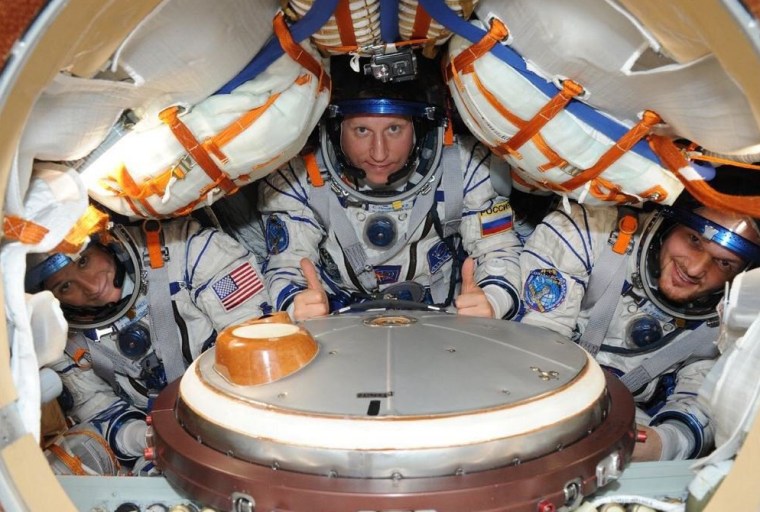
Tight fit
From left, NASA astronaut Serena Aunon-Chancellor, Russian cosmonaut Sergey Prokopyev and German astronaut Alexander Gerst are packed into the Soyuz capsule the days of preparation ahead of their June 6 launch to the International Space Station.
"Cozy? Absolutely...but it feels like home," tweeted Aunon-Chancellor.
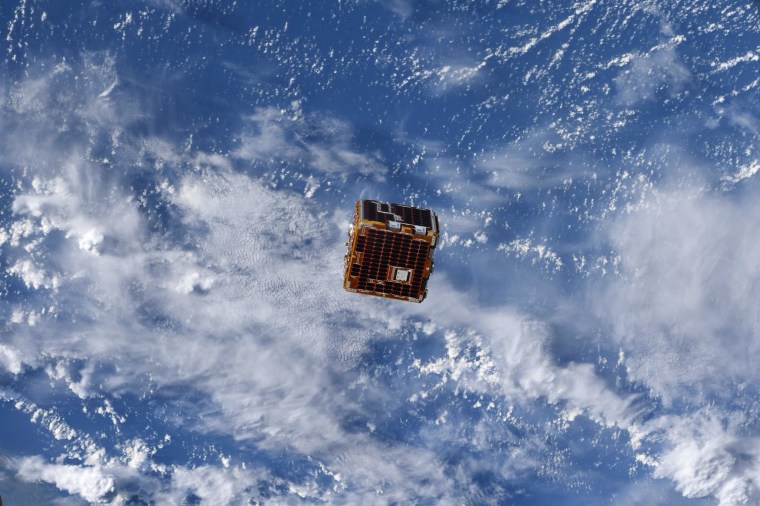
Space junk beware
A debris-removing satellite is deployed for testing on June 20 from the space station.
About the size of a washing machine, the satellite carries three technologies for space-debris capture and de-orbiting — a harpoon, a net and a drag sail.
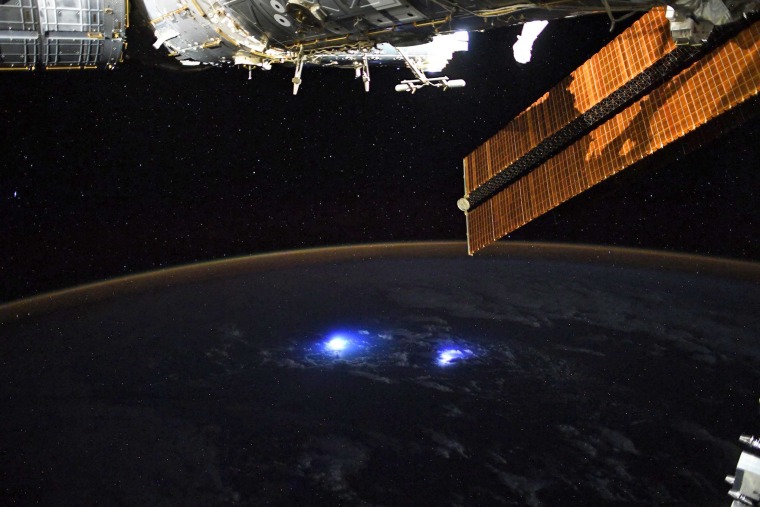
Lightning below
Lightning flashes in the southern Indian Ocean as seen from the space station on June 27.
German astronaut Alexander Gerst posted the image on Twitter, writing "Some of the lightning flashes we see from up here... are so incredibly bright that I can still see the flash with my eyes closed--more than 1000 km away, in space."

Hanging out
NASA astronaut Drew Feustel is tethered to the space station just outside the Quest airlock during a spacewalk he conducted with fellow NASA astronaut Ricky Arnold (out of frame) on June 14.
During the six-hour-and-49-minute spacewalk, the duo installed high-definition cameras to provide enhanced views of commercial crew spacecraft, including the SpaceX Crew Dragon and the Boeing Starliner, as they approach and dock with the orbital laboratory.
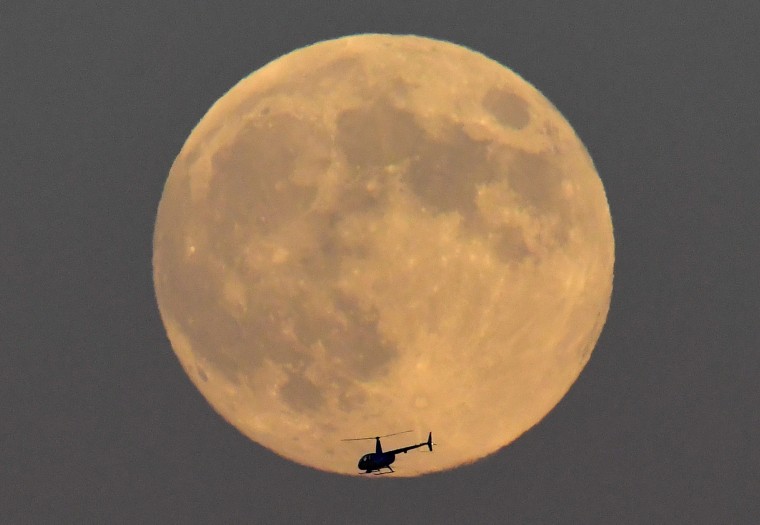
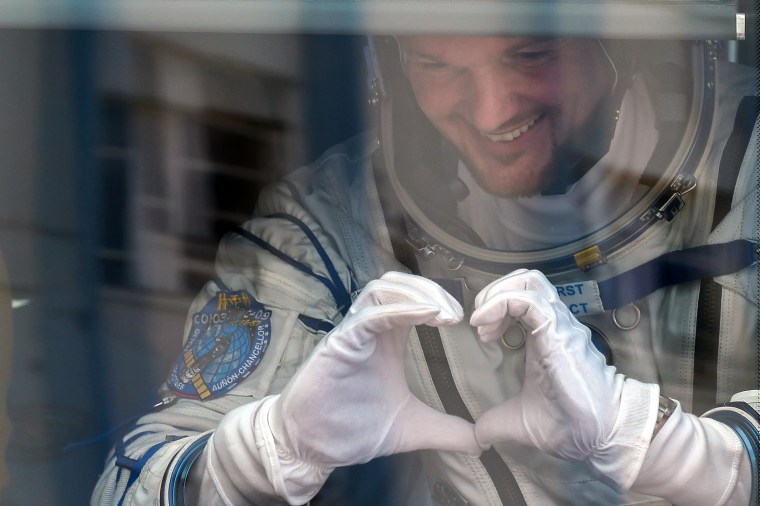
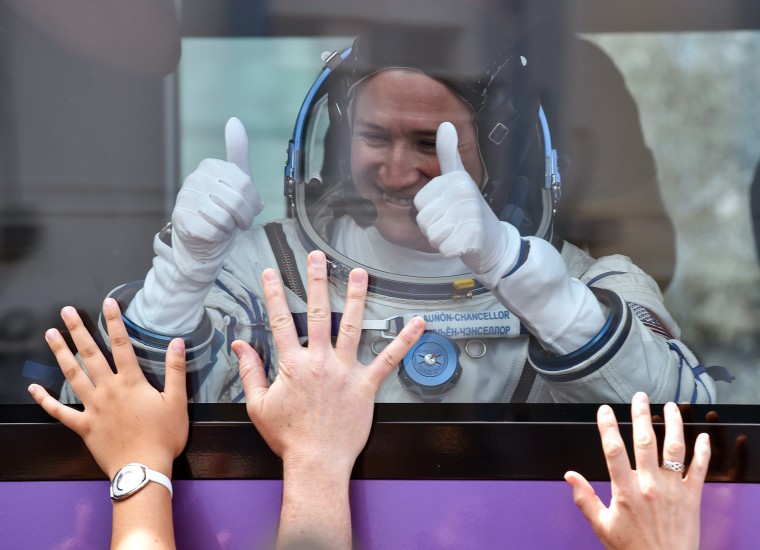
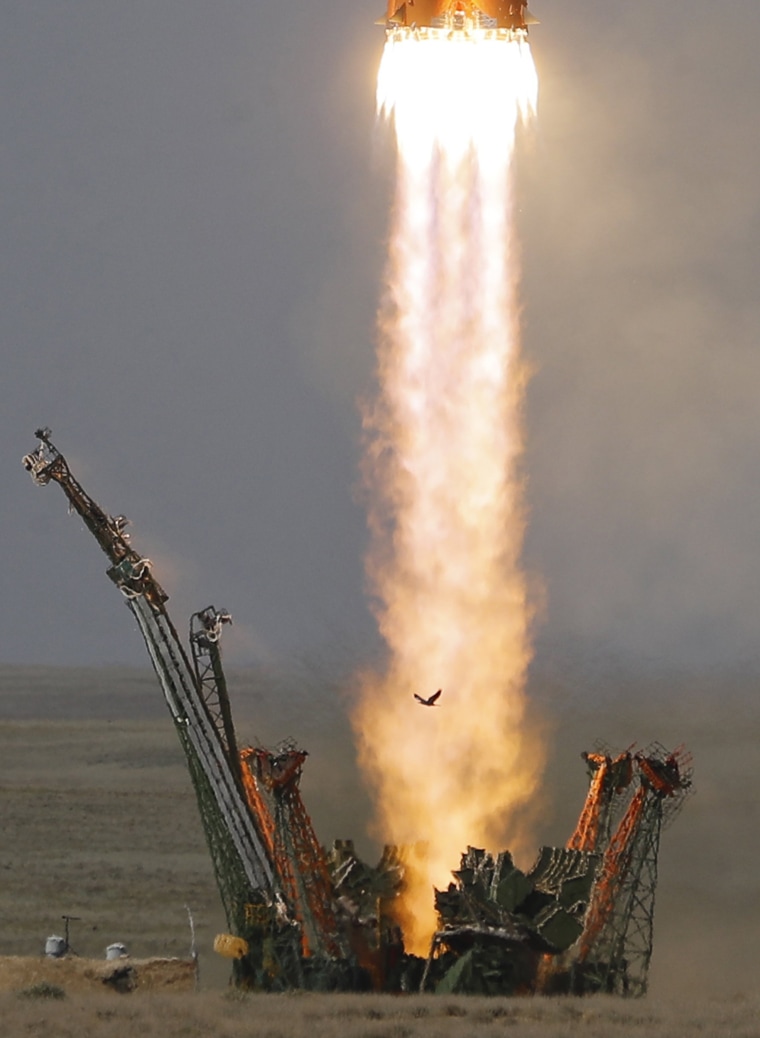
Liftoff!
A bird flies in the foreground as the Soyuz rocket, carrying crew members Sergey Prokopyev of Roscosmos, Serena Aunon-Chancellor of NASA and Alexander Gerst of the European Space Agency, lifts off from the launch pad in Kazakhstan on June 6.
The trio will continue work on hundreds of experiments in biology, biotechnology, physical science and Earth science aboard the space station.
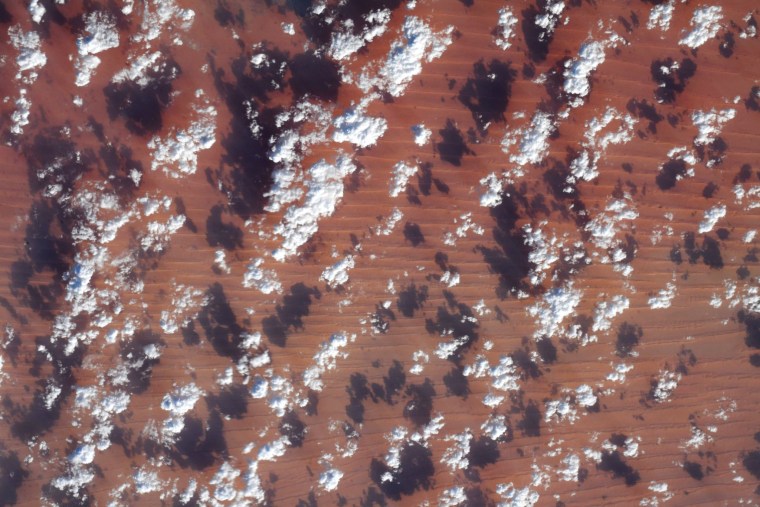
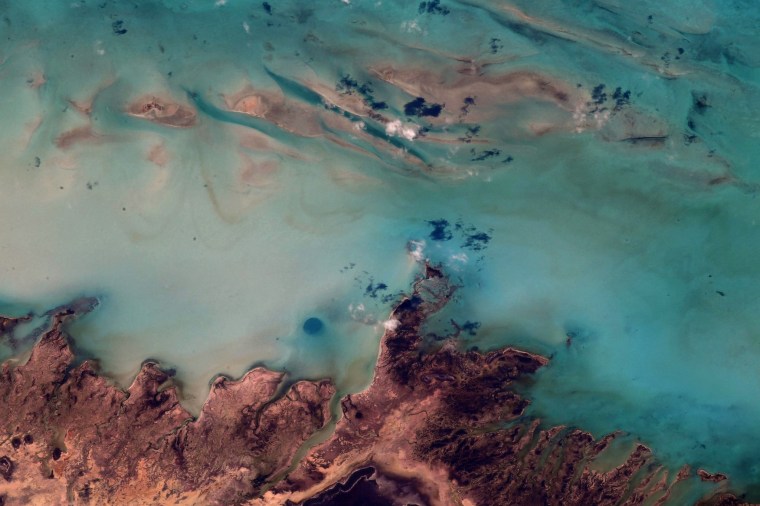
Earth art
The striking greens and blues of the shallower depths of Turks and Caicos are captured in this image from the space station on June 12.
The vivid hues are created by light reflecting off the fine white sand particles, primarily composed of broken-down shells and coral.
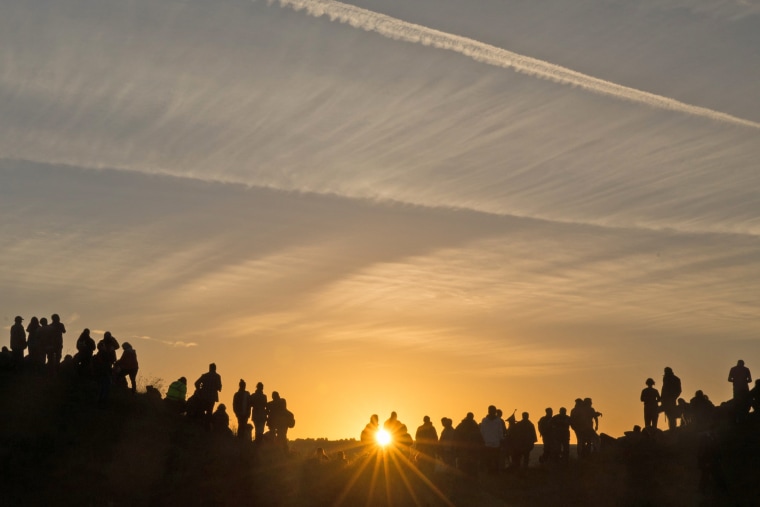
Summer solstice
Spectators gather on the ridge overlooking the Avebury Neolithic henge monument as they wait to see the sun rise on June 21 in Wiltshire, England.
Constructed in the Third Millennium B.C., the Neolithic monument, one of the best-known prehistoric sites in Britain, contains the largest megalithic stone circle in the world. Hundreds of druids, pagans and revelers gathered at the ancient monument to watch the sunset and the sunrise, marking the northern hemisphere's summer solstice.
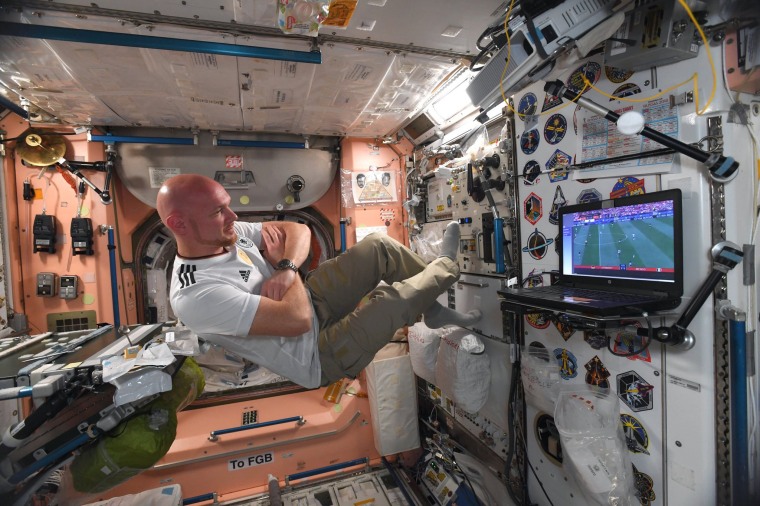
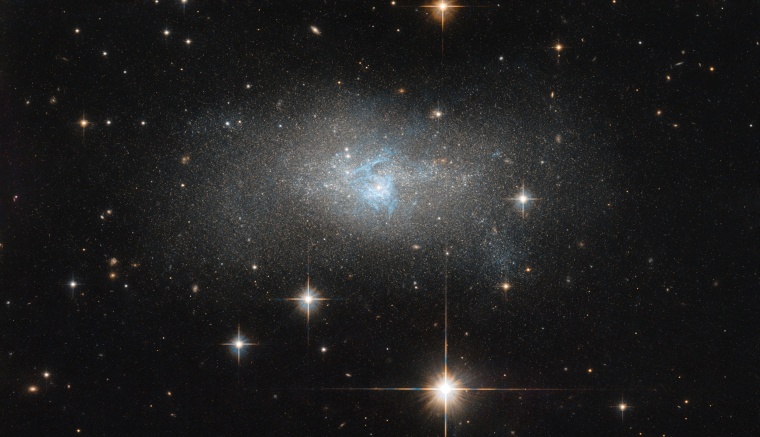
Threads of blue
A ripple of bright blue threads through a galaxy in this image from the Hubble Space Telescope released on June 8. The foreground of this image is littered with nearby stars with their gleaming diffraction spikes. A keen eye can also spot a few other galaxies that, while masquerading as stars at first glance, reveal their true nature on closer inspection.
The central galaxy streaked with color, IC 4870, was discovered by DeLisle Stewart in 1900 and is located approximately 28 million light-years away.
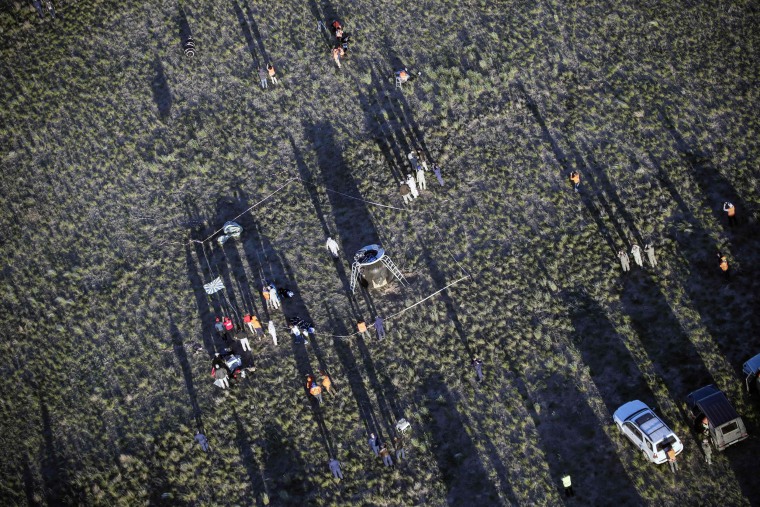
Landing zone
NASA and Russian emergency teams gather at the Soyuz space capsule after its landing on the steppes of Kazakhstan on June 3. Russian cosmonaut Anton Shkaplerov, NASA astronaut Scott Tingle and Japanese astronaut Norishige Kanai returned in the capsule from a mission to the space station.
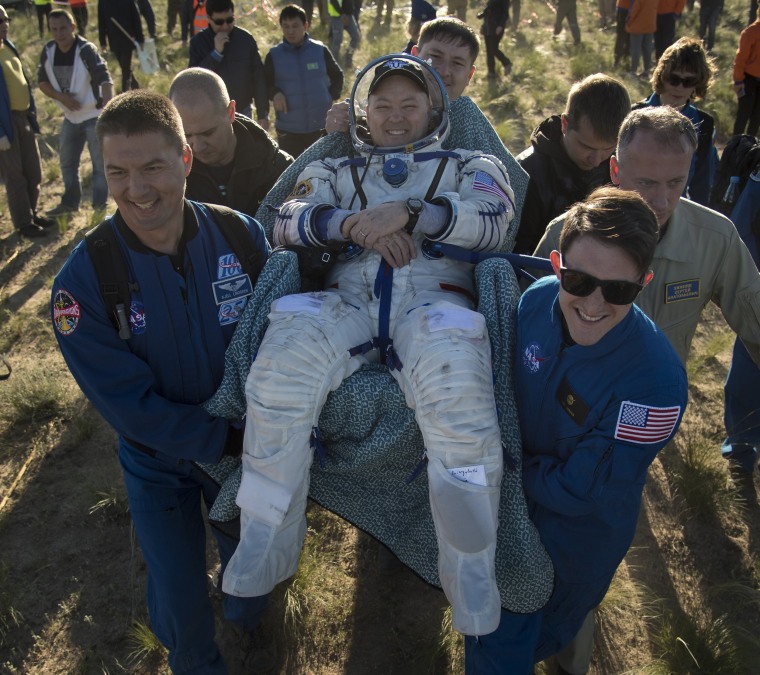
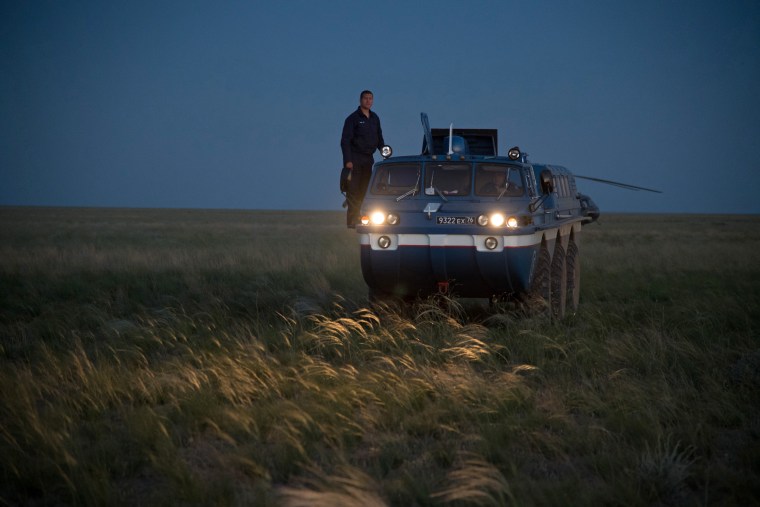
![The Japanese Hayabusa 2 probe captured this image of the Ryugu asteroid from an observation position some 12 miles above the asteroid on June 26, 2018.
/ The erroneous mention[s] appearing in the metadata of this photo by Handout has been modified in AFP systems in the following manner: [This black and white handout photo taken by the Japanese Hayabusa2 probe on June 26, 2018 and released by a Optical Navigation Camera team (ONC-T) from the Japan Aerospace Exploration Agency (JAXA), the National Institute of Advanced Industrial Science and Technology and seven Japanese Univercities, Tokyo university, Kochi University, Rikkyo university, Nagoya University, Chiba Tech university, Meiji university and Aizu University on June 27, 2018] instead of [This black and white image taken by the Japanese Hayabusa2 probe on June 26, 2018 at 12:50 Japan time and released by a team from the Japan Aerospace Exploration Agency (JAXA), the National Institute of Advanced Industrial Science and Technology](https://media-cldnry.s-nbcnews.com/image/upload/t_fit-760w,f_auto,q_auto:best/newscms/2018_43/2481951/ss-180628-misp-mn-18.jpg)
Asteroid up close
The Japanese Hayabusa 2 probe captured this image of the Ryugu asteroid from an observation position some 12 miles above the asteroid on June 26.
Launched by the Japan Aerospace Exploration Agency, JAXA, in 2014, the probe will poke, prod and even impact the asteroid, deploying a small lander and three rovers.
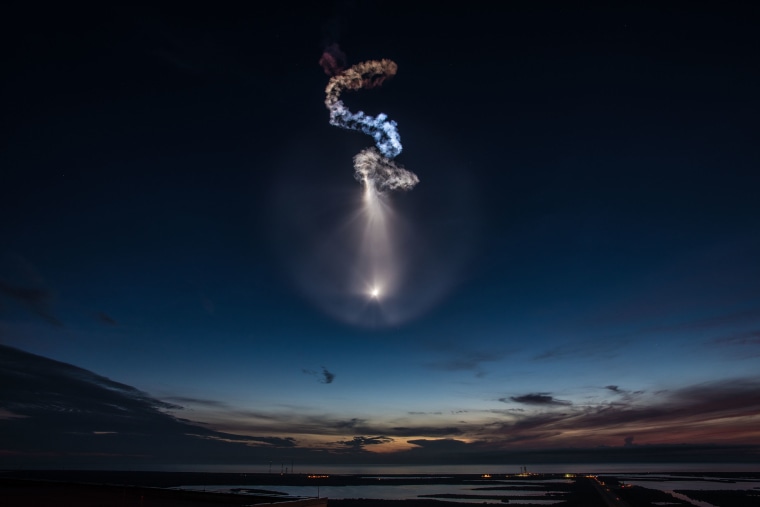
Colorful launch
A SpaceX Falcon 9 rocket launches just before dawn on June 29, 2018 at Launch Complex 40 at Cape Canaveral Air Force Station carrying supplies to the space station.